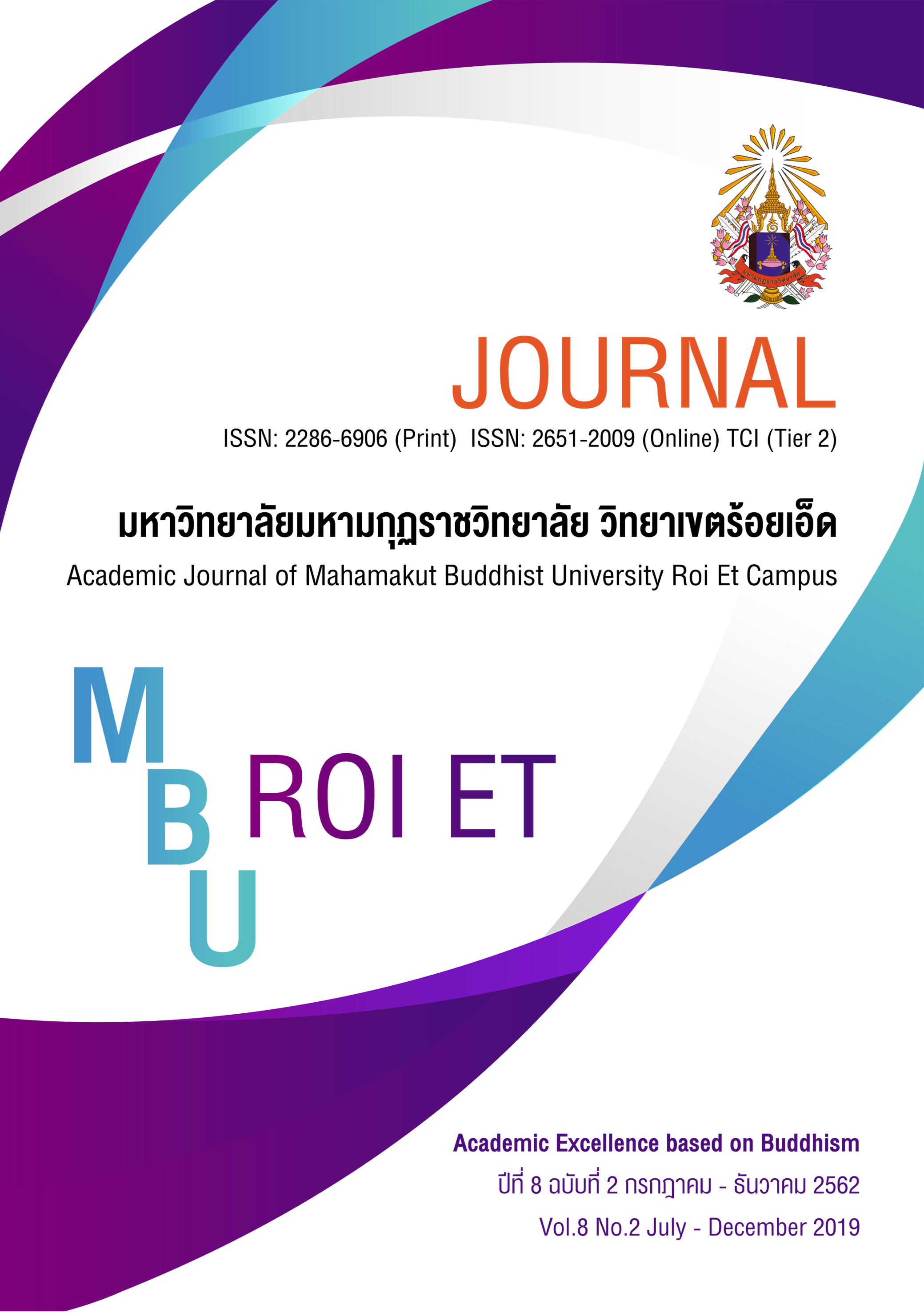Strategy for Sustainable Cultural Tourism Development in the Area of the Northeast
Main Article Content
Abstract
The objectives of this research are to : 1)Study the factors affecting the strategy on sustainable tourism development in the northeastern part of Thailand; 2)Study the appropriate strategy on sustainable tourism development in the northeastern part; 3) Study how to develop cultural tourism destinations as tourism routes with participation of communities. The samples used in this study were specifically selected in the areas of 3 provinces : Nakon Panom, Roi-et and Yasothon, in order to find representatives of cultural tourism providers through 6 key institutions. Information are from 12 knowledgeable people, 50 practitioners and 60 general people, using qualitative research methodology. The tools for gathering information were interviews and focus group discussions. Tripartite testing technique was used to test the information; analysis was made according to the objectives and the research results were presented by analytic narration. The results revealed that :
1. The study on personal factors affecting the strategy on cultural tourism development in the northeastern part found that personal factors did not much affect the strategy formulation because stakeholder analysis was done in cooperation among groups of people from the public, business and locality. The result was presented to set the strategies of public organizations on cultural tourism in the northeast. Therefore, personal factors least affected the strategy formulation. In addition, the study also mentioned the issue on factors affecting tourism strategies, namely : physical and mental capitals.
2. The study on basic factors of tourism destination development in the northeast consisted of diverse cultural tourism destinations distributed in the areas of the northeastern part. Key tourism destinations with numbers of tourists are always taken care by many public agencies. Some destinations are under too many responsible entities, causing administrative and managerial problems, resulting in development to cope with happening situations and being obstacles for development. The integration of working among agencies related to tourism destinations therefore needs an urgent implementation and should be set in the strategy with clear action plans.
3. Identification of cultural tourism routes linking among provinces and regions with clear clusters.
Article Details
References
ภูมิชัย มั่งเรืองสกุล บุญทัน ดอกไธสง สุดใจ ทูลพานิชยวิจ และสะอาด บรรเจิดฤทธิ์. (2555). ยุทธศาสตร์การพัฒนาการท่องเที่ยวอย่างยั่งยืนของจังหวัดนครราชสีมา. วารสารมหาวิทยาลัยราชภัฏมหาสาราคาม(มนุษยศาสตร์และสังคมศาสตร์). 6(3). 55-65.
รุ่งรดิศ เมืองลือ, พยอม ธรรมบุตร. (2560). แผนยุทธศาสตร์เพื่อการพัฒนาการท่องเที่ยวแบบบูรณาการอย่างยั่งยืน ในจังหวัดชลบุรี. วารสารวิชาการมหาวิทยาบลัยฟาร์อีสเทอร์น. 11(2). 162-181.
สุนีย์ เลี่ยวเพ็ญวงษ์. (2557). ยุทธศาสตร์การท่องเที่ยวภาคตะวันออกเฉียงเหนือตอนกลางสู่การเป็นศูนย์กลางอนุภูมิภาคลุ่มน้ำโขง. ในการประชุมวิชาการ การพัฒนาชนบทที่ยั่งยืน ครั้งที่ 4 ประจำปี 2557 วันที่ 11-13 มิถุนายน 2557. 674-678.
สุภางค์ จันทวานิช. (2553). วิธีการวิจัยเชิงคุณภาพ. พิมพ์ครั้งที่ 18. กรุงเทพมหานคร : สำนักพิมพ์แห่งจุฬาลงกรณ์มหาวิทยาลัย.


